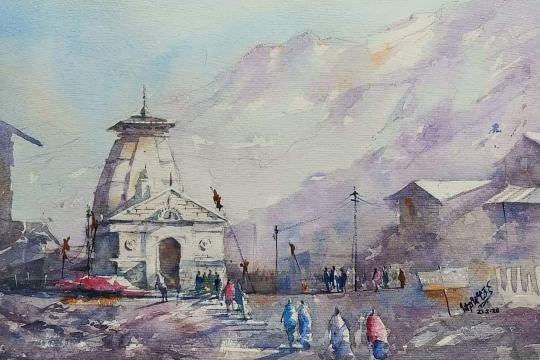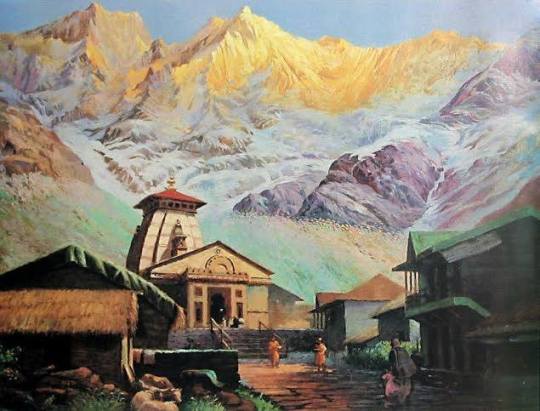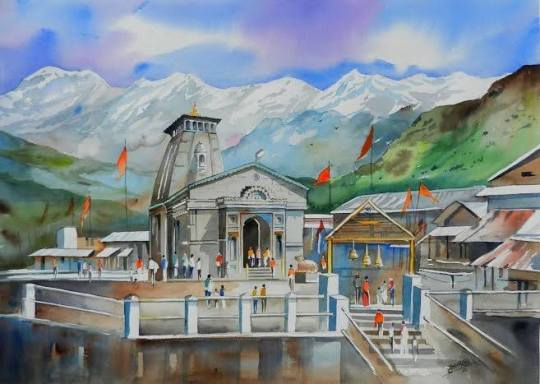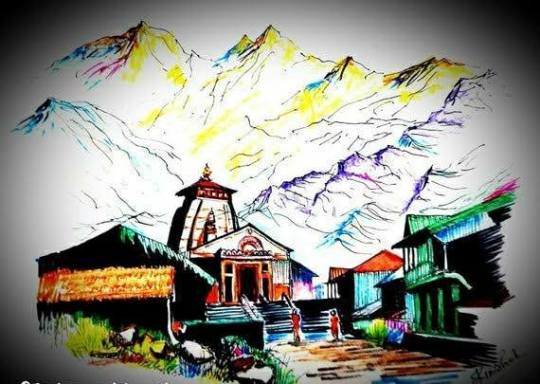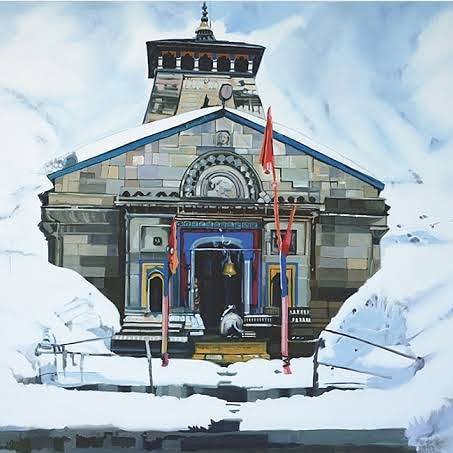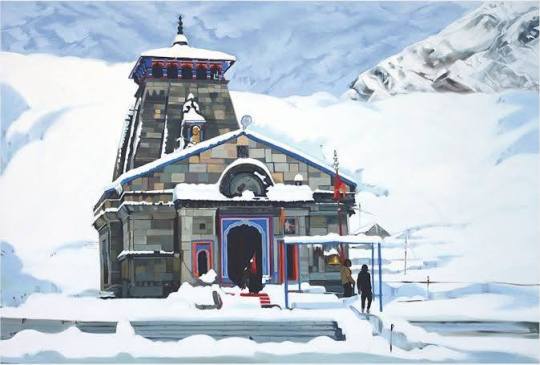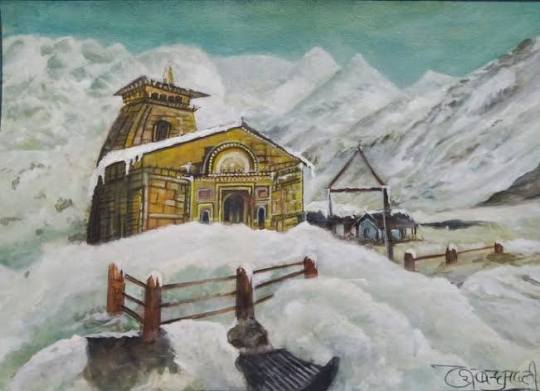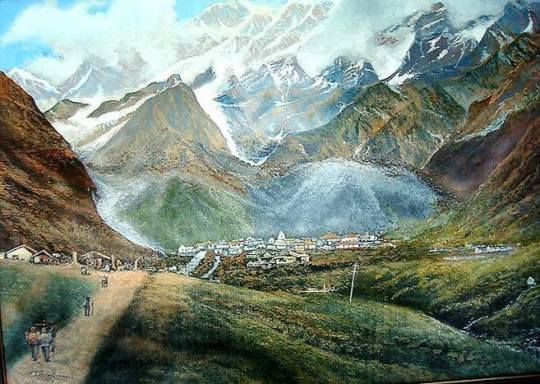Text
Sacred Badrinath
Badarinath is one of the holy shrines for Vaishnavites among the 108 divya desams incarnation of Lord Vishnu. Badrinath town is also the part of Panch Badri temples including Yog Dhyan Badri, Bhavishya Badri, Adi Badri and Vriddha Badri, along with Badrinath temple.

About Temple
The main entrance gate of Badarinath temple is colourful and imposing popularly known as Singhdwar. The temple is approximately 50 feet tall with a small cupola on top, covered with a gold gilt roof. The Badarinath temple is divided into three parts (a) The Garbha Griha or the sanctum sanctorum (b) The Darshan Mandap where rituals are conducted and (c) The Sabha Mandap where pilgrims assemble.
At the Badarinath Mandir Gate, directly opposite the main Idol of Lord himself, is seated idol of Bird Garud, vehicle / carrier of Lord Badarinarayan. Garud os seen is sitting position and in prayer with his hands folded. The walls and pillars of the mandapa are covered with intricate carvings.
The Garbha Griha portion has its canopy covered with a sheet of gold and houses Lord Badari Narayan, Kuber (God of wealth), Narad rishi, Udhava, Nar and Narayan. The complex has 15 idols. Especially attractive is the one-metre high image of lord Badarinath, finely sculpted in black stone. According to legend Shankara discovered a black stone image of Lord Badarinarayan made of Saligram stone in the Alaknanda River. He originally enshrined it in a cave near the Tapt Kund hot springs. In the sixteenth century, the King of Garhwal moved the murti to the present loction of the temple. It represents Lord Vishnu seated in a meditative pose called Padmasan.
Darshan Mandap: Lord Badari Narayan is armed with Conch and Chakra in two arms in a lifted posture and two arms rested in Yogic Pose. Badarinarayan is seen under the Badari tree, flanked by Kuber and Garuda, Narad, Narayan and Nar. As you look, standing to the right side of Badarinarayana is Uddhava. To the far right side are Nara and Narayana. Narada Muni is kneeling in front on the right side and is difficult to see. On the left side are Kubera-the god of wealth, and a silver Ganesh. Garuda is kneeling in front, to the left of Badarinarayana.
Sabha Mandap: It is a place in the Temple complex where pilgrims and pilgrims assemble.
History
The name of the Badarinath tirtha originates from local word Badari which is a type of a wild berry. It is said that when Lord Vishnu sat in penance in these mountains, His consort Goddess Laxmi took the form of a berry tree and shaded Him from the harsh sun. It is not only the dwelling place of Lord Vishnu Himself but also home to countless pilgrims, saints and sages, who meditate here in search of enlightenment.
"According to Skand Puran, the idol of Lord Badarinath was recovered by Adiguru Shankaracharya from Narad Kund and was re-enshrined in the 8th century A.D. in this temple."
According to Hindu Tradition, Badarinath often called as Badari Vishal, was re-established by Adi Shri Shankaracharaya to revieve the lost prestige of Hinduism and to unite nation in one bond. It was built in the ages when Buddhism was spreading in the Himalayan range and there was worry that Hinduism was losing it's importance and glory. So the Adi Sankaracharya took it upon himself to bring back the glory of Hinduism and built temples in the Himalayas for the Hindu Gods of Shiva and Vishnu. The Badarinath temple is one such shrine and is richly infused with sacred accounts from numerous ancient Hindu scriptures. Be it the puranic story of the Pandav brothers, along with Draupadi, going past on their last pilgrimage by ascending the slopes of a peak near Badarinath called Swargarohini or the 'Ascent to Heaven' or the visit by Lord Krishna and other great sages, these are just some of the many tales which we associate with this holy tirtha.
The famed Skanda Purana describes more about the place as "There are several sacred shrines in heaven, on earth, and in hell; but there is no shrine like Badarinath."
According to Vamana Purana, the sages Nara and Narayana 'fifth avatar of Lord Vishnu' performed Penances here.
Great sages of yore like Kapila Muni, Gautam, Kashyap have performed penance here, Bhakta Narada attained salvation and Lord Krishna loved this region, medieval religious scholars like Adi Shankaracharya, Ramanujacharya, Sri Madhavacharya, Sri Nityananda have come here for learning and quiet contemplation and so many still continue to do even today.
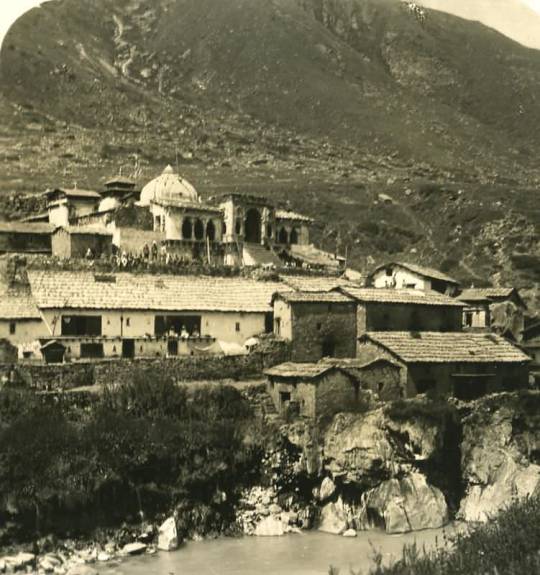
Badrinath Temple near Alaknanda River in 1906

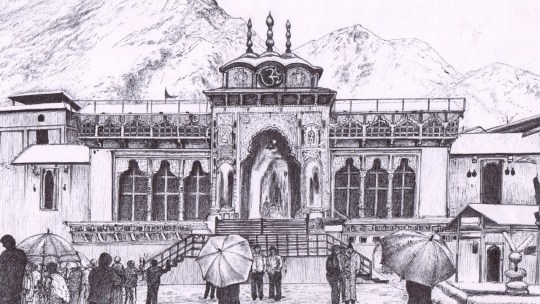


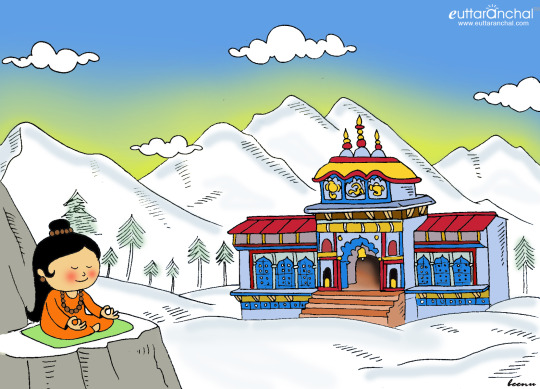
How to Reach ?

Neel Sunder Jalan
6 notes
·
View notes
Text
Ancient Kedarnath
Kedarnath temple is one of the sacred pilgrimage centre in Northern India, located on the bank of Mandakini river at an altitude of 3584 meters above sea level. The historical name of this region is "Kedar Khand". Kedarnath temple is a part of Char Dhams and Panch Kedar in Uttarakhand and one of the 12 Jyotirlingas of Lord Shiva in India.

Overview
There are more than 200 shrines dedicated to Lord Shiva in Chamoli district of Uttarakhand itself, the most important one is Kedarnath. According to legend, the Pandavas after having won over the Kauravas in the Kurukshetra war, felt guilty of having killed their own Kith and Kin and sought blessings of Lord Shiva for redemption. He eluded them repeatedly and while fleeing took refuge at Kedarnath in the form of a bafellow.
On being followed, the Lord dived into the ground, leaving his hump on the surface at Kedarnath. The remaining portions of Lord Shiva appeared at four other places and are worshipped there as his manifestations. The arms of the Lord appeared at Tungnath, the face at Rudranath, the belly at Madmaheshwar and his locks (hair) with head at Kalpeshwar. The Kedarnath and four above mentioned shrines are treated as Panch Kedar (Panch means Five in Sanskrit).
The Temple at Kedarnath presents an imposing sight, standing in middle of a wide plateau surrounded by lofty snow covered peaks. The temple was originally built in 8th century A.D. by Jagad Guru Adi Shankaracharya and stands adjacent to site of an even earlier temple built by the Pandavas. The inner walls of the assembly hall are decorated with figures of various deities and scenes from mythology. Outside the temple door a large statue of the Nandi Bafellow stands as guard.
Dedicated to Lord Shiva, the Kedarnath temple has exquisite architecture Built of extremely large, heavy and evenly cut grey slabs of stones, it evokes wonder as to how these heavy slabs were moved and handled in the earlier centuries. The temple has a Garbha Griha for worship and a Mandap, apt for assemblies of pilgrims and visitors. A conical rock formation inside the temple is worshipped as Lord Shiva in his Sadashiva form.
History
In Hindu tradition, it is believed that Lord Shiva manifested in form of Jyotirlingam or the cosmic light. There are 12 such Jyotirlingas and Kedarnath is highest among them. This magnificent temple is ancient and constructed over a thousand years ago by Jagad Guru Adi Shankaracharya. It is located in the Rudra Himalaya range of Uttarakhand State. It is situated at an altitude of 3,581 mt & it is a 16 km trek from the nearest place of Gaurikund.
The Kedarnath temple is built of massive stone slabs over a large rectangular platform. The temple is ascended through large grey Steps which leads to the Holy Sanctums. We can find inscriptions in Pali language on the steps. The inner walls of the temple sanctum are adorned with figures of various deities and scenes from mythology.
The origin of Kedarnath temple can be traced to the great epic - Mahabharata. According to legends, after winning the battle of Mahabharata against the Gauravas, the Pandavas sought blessings of Lord Shiva to atone their sins of Killing men during the war. Lord Shiva eluded them repeatedly and while fleeing from them took refuge at Kedarnath in form of a bafellow. On being followed by the Pandavas, he dived into ground at the exact place where the Holy Sanctum is now present, leaving behind his hump on the floor surface, which is now visible. This Hump inside the temple is in the form of a conical rock formation and is worshipped as Lord Shiva manifested in his Sadashiva form. The Pujas and Archanas are performed on this manifestation by priests and piligrims. There is also a Holy Statue of Lod Shiva inside the temple, which is the portable manifestation (Utsavar) of the Lord.
Outside the temple door, a large statue of Nandi bafellow stands as guard. The temple, has been continually renovated over the centuries.
Kedarnath experiences very heavy Snowfall in Winter (upto several metres) and the temple itself is blanketed with snow from Novemner to April. So, at the onset of Winter every year, which is normally in the First week of November and on an auspicious date which is announced in advance by UCDDMB, the holy symbolic statue of Lord Shiva is carried down from Kedarnath temple to a place called Ukhimath, where it is worshipped as Lord Shiva. The pujas and archanas are done at Ukhimath from November till May of next year. In the first week of May and on an auspicious date which is announced in advance by UCDDMB, the symbolic statue of Lord Shiva is carried back from Ukhimath to Kedarnath and reinstated in the original place. It is at this time, that the doors of the temple are thrown open to pilgrims, who flock from all parts of India, for a holy pilgrimage. The shrine generally closes on the first day of Kartik (Oct-Nov) and reopens in Vaishakh (Apr-May) every year.
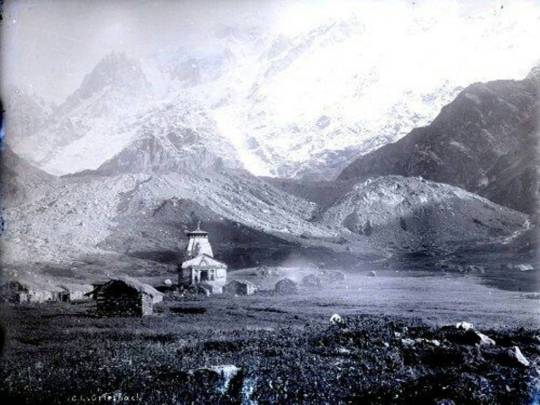
Kedarnath Temple in 1882

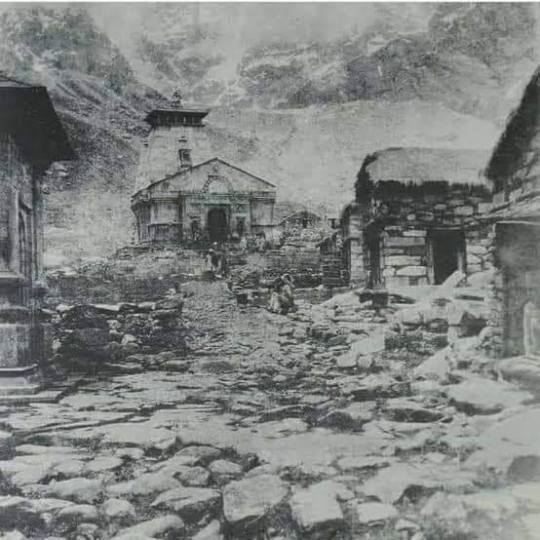

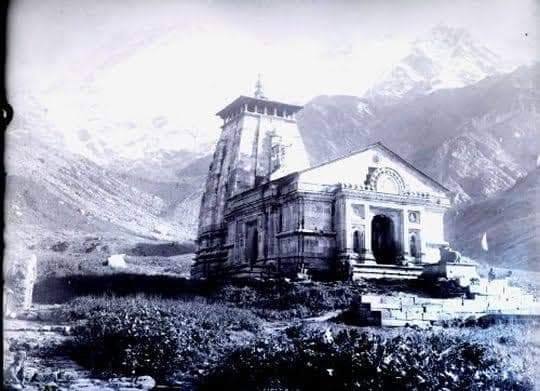


How to Reach ?

Neel Sunder Jalan
#Kedarnath#Char Dham Yatra#Himalayas#Pilgrimage#Panch Kedar#Trekking#History#Ancient#Spirituality#Positivity#Uttarakhand
2 notes
·
View notes
Text
about blog
i am Neel Sunder Jalan from INDIA .. welcome to my blog .. (tumblr member since July 2020) .. on this blog .. i write about the places .. wherever i traveled .. Gratitude !
Connect …
Instagram
Facebook
Tweets by NeelSunderJalan
1 note
·
View note
